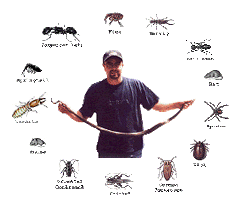
Unfortunately, infestations of any pest can be difficult to predict. It’s fairly certain the Department for the Environment, Food and Rural Affairs didn’t see it coming when their London headquarters were invaded by clothes moths, despite being the department in charge of pest control. The building had to be fumigated, and although no information on the cost has been released, it is likely it ran into thousands of pounds.
It’s not just the cost of fumigation that makes clothes moths expensive, either. As the name implies, they eat clothes and their fondness for natural fibres means they prefer expensive materials to cheaper ones. Cashmere, silk and wool are some of their favourites, and it is not uncommon for an entire house to be infested. Replacing damaged woollen carpets, wedding dresses and designer labels doesn’t come cheap.
Other pests can be costly, too. Pigeons are a nuisance as their droppings are damaging to stonework and statues. They also make emergency exits slippery and can cause allergic reactions and disease. It is estimated that it costs around £15 million a year to clean up the mess.
Rats and mice can be expensive due to their propensity to chew on furniture, skirting boards and cables. This is a particular problem if electrical wiring is gnawed through, as the house will need to be rewired or may even burn down. They can also chew through lead pipes, causing water damage. Peter Priestley, president of the British Pest Control Association, said that he once saw the whole first floor of a house collapse due to rats eating through the beams. As rodents are sometimes considered an ‘act of God’ by insurance companies (presumably like a biblical plague), not all damage is covered.
Making a claim on your insurance probably isn’t the best solution, in any case. Prevention is better than cure and is relatively simple with some pests. Clothes moths like natural fibres that have been left in dark places for long periods of time. Periodically taking clothes out of the back of the cupboard, making sure they are put away clean and using cedar moth balls and sprigs of lavender can make all the difference. With rodents, the key is to make sure that food spillages are cleared up and block any entry points into the house. Pigeons are a little more difficult to deter, and in this case it is best to contact a professional pest management company. Nets and spikes can be installed to stop the birds settling on a particular property.
If you already have a pest problem, though, the best thing you can do is act – sooner rather than later. Contacting a pest control service is the best thing you can do, as without professional advice, pests can come back.
Terminex are a reputable pest control company, known for their high levels of customer service and knowledgeable staff. They even contract an entomologist from Imperial College London to help combat clothes moths. Contact them today for advice how to protect your home from pests or to remove an infestation.
Link
 RSS Feed
RSS Feed